
The Taxidermy Hall of Fame is proud to introduce the nominees for the class of 2019. The final inductees will be announced during the Friday night Awards Banquet in Springfield, Missouri on May 3, 2019 during the World Taxidermy Championships. The induction ceremony will held in July during the National Taxidermists Association convention in Sioux Falls, South Dakota. The six new nominees are as follows:
Cary Cochran
Terence Coffin-Grey
Mike Othober
Stefan Savides
Herman H. ter Meer
Jan Van Hoesen

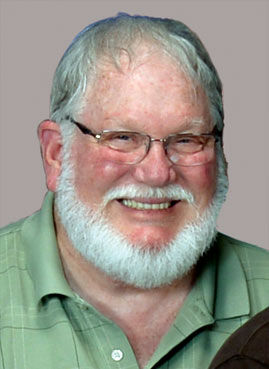
Cary Cochran
Date of Birth: March 19, 1948
Place of Birth: Charleston, West Virginia
Current Location: Millersburg, Ohio
Cary Cochran was born in Charleston, West Virginia, on March 19, 1948. He lives in Millersburg, Ohio, with his wife of 50 years, Gail. Cary is recognized as one of the most accomplished taxidermists in the United States since the mid 1980s. In 1986 while working for Buckeye Mannikins, he acquired a portion of the ownership of the company and was appointed to the position of vice-president.
While at Buckeye Mannikins Cary sculpted mannikins for whitetail deer, wild boars, rug shells, turkeys, and other species of bird bodies. He sculpted a line of turkey bodies with a different system for mounting along with a line of realistic artificial turkey heads that revolutionized this difficult area of taxidermy. He also broadened and refined deer-mounting techniques and developed products such as artificial nictitating membranes, nose septums, replacement nose casts, artificial mouth parts, and different methods of using Sculpall for open-mouth work.
In 1987 Cary won Best in World Whitetail Deer on an original mannikin he had sculpted. The judges that year were Larry Blomquist and Joe Meder, and they remarked that his entry “had details no one had ever captured in taxidermy competition with great accuracy and outstanding finish work.” Cary had established new standards that are only equaled today. He continued to compete for many years, winning virtually every top award available for his mammal and bird taxidermy. In fact, Cary earned a blue ribbon with every whitetail he ever entered in taxidermy competitions.
With all the talents of this gifted artist, it could easily be said his biggest contributions to taxidermy has been sharing his knowledge with others. Cary has judged and given seminars at over 100 taxidermy state, regional, national, and World Shows. In addition, he has given seminars at public shows such as the National Wild Turkey Federation, Quality Deer Management Association, and large sportsman shows, all with the purpose of promoting taxidermy over the past 40 years.
Cary has shown leadership and given in many other ways to promote unity and quality taxidermy. He has sculpted Best of Category medallions, made and donated custom game calls for auction items, and given five-day workshops as auction items to various taxidermy associations. In 2014 he was one of the first in a group to be inducted into the Ohio Taxidermy Hall of Fame. He has written several articles for Breakthrough magazine on taxidermy processes and analysis of his original reference photography.
At age 70 Cary still enjoys many facets of taxidermy and has recently developed a new line of earliners for deer, coyotes, and African lions. He has refined some new deer nose casts and recently designed a chewing whitetail mouth-cup. He will again be one of the judges at the 2019 World Taxidermy Championships. Its no wonder he often says, “When taxidermy gets into your blood, you can’t get it out.”

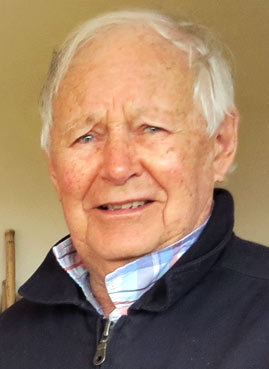
Terence Coffin-Grey
Date of Birth: July 19, 1926
Place of Birth: Republic of South Africa
Current Location: Humansdorp, Eastern Cape, South Africa
Terence Coffin-Grey was born July 19, 1926, to South African pioneering stock in Port Elizabeth, Eastern Cape Province, South Africa. He keeps a hand written diary from 1940 to this day. Given his advanced age of 92 he is currently in good health. At an early age he, developed into an avid hunter, naturalist and taxidermist as he roamed the veld of the Eastern Cape with his twin and elder brother. When the boys turned 13, their father seeing their interest in making a ‘museum’ in their bedroom, bought them Practical Taxidermyby Montagu Browne, a British taxidermist. The boys skinned and mounted everything they collected from, birds and small mammals, to snakes, lizards and fish. Lack of funds prevented young Terence from attending university so he joined the Post Office as a telegraphist in 1943, although his heart’s ambition was to join a museum and travel Africa as a taxidermist/explorer like Carl E. Akeley.
In 1948 he married Yvonne Hefferon and at that time, Southern Rhodesia (Modern Day Zimbabwe) was welcoming immigrants so in 1950 the couple moved to Bulawayo. Soon Terence was mounting birds and mammals in their small dining room. An advertisement in the Bulawayo Chronicle for a museum taxidermist/technician caught Terence’s eye and when he applied, he impressed the Director of National Museums of Rhodesia, the great naturalist Dr. Reay H. N. Smithers (O.B.E.). Thus began Terence’s journey with The National Museums and Monuments of Rhodesia and Nyasaland.
Dr. Smithers tutored Terence and in 1961 gave him the enormous responsibility of assisting in the internal architecture of the new Natural History Museum in Bulawayo. There he created many large exhibits, the most spectacular of which was a giant walk-in habitat group which displays the Doddiburn elephant and full mounts of giraffe, eland, zebra, warthog, buffalo, waterbuck and a pride of lions on a zebra kill in the Lowveld Hall. In 1965, Terence went for additional training at the Carnegie Museum in Pittsburgh, Pennsylvania, USA, under the tutelage of Otto Epping. There was also further training in Germany with Karlheinz Fuchs, an expedition to the Okavango delta of Botswana with H.R. H. Prince Bernhard of the Netherlands and some time at the British Museum.
In 1952, Terence as a courtesy by the National Museum in Rhodesia to Rowland Ward of London , spent two months on an expedition where he prepared hides and skulls for transportation to London. A giant sable antelope, Hippotragus niger variani, (Varian’ts sable), a White-bearded gnu and a Black-faced impala were ultimately mounted by Gerald Best of Rowland Ward and donated to the British Museum from that collecting trip.
Later in 1958 Terence accompanied Dr Elliot Pinhey, entomologist, throughout all of West Africa. Following rivers, while Dr Pinhey was specialising in dragonflies and damselflies, Terence collected birds and small mammals. It was a gruelling three month trip by Land Rover going through Chirundu, Elizabethville (Lubumbashi), Goma on Lake Kivu, Stanleyville (Kisangani), Leopoldville (Kinshasa), over the Congo River, Brazzaville, on to French Equatorial Africa (Republic of Congo, Chad, CAR, Cameroon and Gabon), through British Cameroon to the town of Mamfe in French Cameroon. Here they stayed at the Palace the Fon of Bafut. Shortly afterwards Dr Pinhey became severely ill and at an American Presbyterian Medical Mission, found that Terence had a bad case of malaria. Dr Pinhey was flown home and Terence faced the long trip home alone and almost out of funds.
In 1962 Terence reunited with Dr Pinhey to the Congo via Lusaka to rescue a very important collection of Insectivora in the museum in Elizabethville, now Lubumbashi. The British High Commission in Elizabethville came to their rescue by meeting the National Museum Land Rover at the border and driving them to the rebel held Museum in their own vehicle. The rebels considering the insect collection to be ‘takati’, controlled by wizardry, did not damage any of the beautifully made cases. The collection is in the Transvaal Museum, now the Ditsong National Museum of Natural History. Later that same year, Terence was asked by Rhodesian National Parks to collect live white rhinos, which were safely driven 1200 miles. Terence was sought after to accompany the Denver Museum of Natural History when they came in 1969 to collect specimens in Southern Africa in the Kalahari, Okavango and Rhodesian bush.
Museum salaries have never been enough to comfortably live on so Terence started Taxidermy Enterprises with Yvonne in the 1960’s. Safari hunting was big business and Taxidermy Enterprises flourished. Terence worked at the National Museum until 1978 and it was about this time that he and Nico Van Rooyen founded the Taxidermy Association of Southern Africa (TASA). Their aim being to raise the standard of taxidermy in Southern Africa by holding workshops for interested taxidermists and they gave may years of service to this organization..
In the early 1980’s, Terence and Yvonne sold Taxidermy Enterprises and moved back to South Africa. Terence not yet 55 years old had already achieved so much in the field of taxidermy but he could not sit idle. With the able assistance of Terry Donnelly, one time National Museum artist, he created a museum for Fred Burchell, Mpongo Park, East London. On display are the birds and animals named by Burchell’s great-uncle W.J. Burchell. Terence married Terry, after Yvonne passed away. Around 1990, came the creation of a new taxidermy studio, Taxidermy Africa, in Humansdorp, Eastern Cape with daughter Cathy and son-in-law John Peacock. This offered the opportunity for Terence to pass on his wealth of knowledge to a new group of would be taxidermists.
Not content with the day to day teaching of new talent, Terence struck out on another new project once again ably assisted by Terry Donnelly. The sculpting of early hominid and prehistoric creatures for the McGregor Museum in Kimberley and the Albany Museum in Grahamstown. These had to be scientifically correct, problematic as there are many boffins out there and the internet can make life interesting. Using his years of experience in sculpting, moulding and casting Terence produced, to the scientist’s satisfaction, replicas of Australopithecus africanus, Homo erectus(Brokenhill man) and Aulacephalodon, 253 million years old.
Terence Coffin-Grey’s many talents and experiences which he has unselfishly shared throughout his life has certainly earned him the title of “Master Taxidermist.”

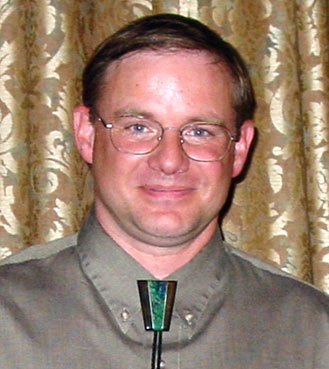
Michael Gary Orthober
Date of Birth: November 27, 1961
Place of Birth: Sturgeon Bay, Wisconsisn
Current Location: Egg Harbor, Wisconsin
Michael’s father taught him to draw (trucks, airplanes and birds) at a young age. Later he acquired a couple bird books and started drawing the birds contained in them. Along with his interested in birds he started building WWII aircraft models and learned to use an airbrush to paint them. His father (Gary) and uncle (Roger) were hunters so Michael began hunting with a BB gun at a young age. His uncle had a fews mounts in his home and Michael admired the taxidermy and decided to try taxidermy on his own beginning with birds. His uncle gave Michael the lesson books he bought from the Northwestern School of Taxidermy along with the tools (Michael says he still uses the carcass hooks). He also found a book in the school library called Quality Taxidermy that aided in his start of taxidermy. The first bird he attempted was a pigeon when he was 11 years old.
Michael started a business in his parents basement during his sophomore year in high school doing birds. Soon he move on to mammals and started fish in1983.
He joined the Wisconsin Taxidermy Association and in 1981 where he attended his first competition. He did not compete, but was impressed with all the taxidermy and seminars. He began competing the following year and missed only one WTA competition over the next 36 years. He was on the WTA Board of Directors for 4 years and was the WTA competition committee chairman for 17 years.
Mike married to Lorie Orthober in 1982. In 1983 Michael worked briefly for a large taxidermy studio, but decided after a couple of weeks that assembly line taxidermy was not for him. Michael took a completely different path. He had acquired five acres of family land and with a background of working in construction built his workshop and moved his taxidermy business there. After several years part time he went full time in the late 1980’s.
Michael continued competing and won his first blue ribbon in 1989. In 1995 he won his first judges best of show in Wisconsin and went on to win nine more Best of Shows at various competitions. By the year 2000 Michael had established himself as one of the most accomplished taxidermist in all phases of taxidermy in the World. Some of his major winnings include ten Best of Shows, nine WASCO Awards, two First place World Show Master of Masters awards, one Third in World, two Second in World and three Best in World titles. He has won numerous major awards at the NTA including the NTA Taxidermist of the Year in 2017.
Mike Orthober’s accomplishments and vast knowledge of all areas of taxidermy has earned him judging assignments at many state shows the IGT, the NTA, European Championships, Canada Championships, Russia Championships, New Zealand Championships, and the World Taxidermy Championships. He has been highly sought after as an instructor having given over 100 seminars and still does one on one classes in his studio.
In 1997 Mike was contracted to build a wildlife exhibit at the local county museum (Door County Historical Museum, Sturgeon Bay, WI). He designed the diorama, painted the background mural which is approximately 30′ x 14′ tall and a side wall that’s 14′ x 9′. He also built the habitat which includes a large beech tree, a limestone rock ledge, a stone fence, water scene and the ground cover. Michael also mounted all the animals and birds. There are approximately 140 birds from hummingbirds to raptors, eight mammals, and assorted reptiles and amphibians. Most of these mounts were mounted at the museum with people watching him work and asking questions. The exhibit was officially opened in 2004. Mike still add specimens every year. He also does many protected birds for nature centers and schools which is his favorite facet of taxidermy.
During this time he also started doing a taxidermy and exhibit lecture for the Door County Historical Museum at the Elderhostel program in his county. After the museum quit participating, he now continues to do it as a service to his community. He does the lecture around ten times per summer. Michael has taught thousands of people what taxidermy is all about and they are always amazed! He helps teach a taxidermy class at two high schools in his county for the last ten years and also teach hunters safety, including the wildlife ID and game care part of the class for 16 years.
Michael Orthober has achieved tremendous achievements in taxidermy, he has given back to the industry as an instructor, judge, sculptor and association board member and leader. He has educated thousands of non-taxidermist as to the complexity of our trade and the artistry of our craftsman. He deserves strong consideration for induction into the Taxidermy Hall of Fame.

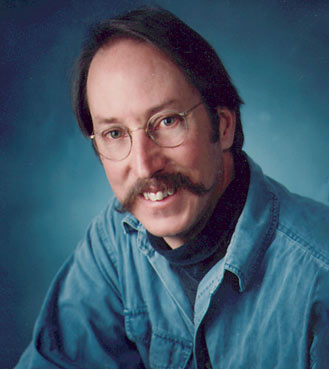
Stefan Savides
Date of Birth: April 1, 1950
Place of Birth: Pomona, California
Current Location: Klamath Falls, Oregon
Stefan Savides is a true artist. This man was born with a total fascination of the natural world. Like many of us, we had early childhood interests in nature, however, in Stefan’s case, those interests were nurtured by his mother who taught him to embrace the teachings and beauty of nature. Stefan was totally influenced by this exceptional woman who saw his obsession with birds at an early age, and instead of exposing him to the Cub Scouts, she formed a junior Audubon club. She organized weekly meeting with eight-year-old Stefan and a handful of friends and taught them many things about birds.
When Stefan was twelve he managed to connect with a retired preacher who practiced taxidermy as a hobby who taught him a very basic beginning in bird taxidermy. From then he scoured the roadsides and beaches looking for dead birds to mount. By age sixteen, Stefan had built a reputation that had caught the attention of people in his hometown of Vacaville, California, and he was asked to teach a taxidermy class to adults through a city night-school program. It ran for a two-year period and numbered up to fifty students. By this time he had also built a thriving clientele base and was looking to expand.
When Stefan graduated from high school, he collected his tools and packed everything he owned into a Volkswagen and headed north to the Klamath Basin, at the border of California and Oregon and one of the largest waterfowl staging areas in the country, and he set up shop in a wild duck processing plant. From that day forward he was swamped with work!
He constantly wanted to learn more so he attended his first taxidermy show, the World Taxidermy Championships in 1985. He came away from that show with a Second in World Upland Gamebird, Second in World “Other” Bird, and Third in World Waterfowl. It was then that he set the personal goal to be asked to judge that show someday. That someday happened very soon and he judged the World Championships for two decades running.
During this period he created one of the most complete lines of anatomically correct bird forms for Research Mannikins. He started conducting avian workshops in his studio as well as across the country. He has judged just about every state taxidermy show in the United States, as well as competitions at the National Taxidermists Association, Canadian Taxidermy Association, International Guild of Taxidermists, Scandinavian Taxidermy Association, and New Zealand Taxidermy Association. Stefan was also a prolific writer and wrote many articles for Breakthrough magazine on everything from how-to to judging and artistic composition.
His taxidermy expertise caught the eye of collectors from across the country. This afforded him to travel around the globe caring for bird trophies in the field. This included a number of trips to Africa with Mr. and Mrs. Dick Cabela. He subsequently spent a ten-year period working on integrating hundreds of bird mounts into the 53,000-square-foot dream home of the Cabelas. This project also included numerous bronze fixtures that enhanced the project as well.
Many years ago Stefan had the vision that if he wanted to leave a lasting mark on the world of wildlife art it would be best to do it in bronze, and fifteen years ago he embarked on this second and new venture of his life. Taxidermy brought him to sculpting bronzes, and before leaving taxidermy as his main profession, he had a tremendous impact of thousands of today’s waterfowl taxidermists.
He is now represented by numerous prominent galleries across the country and his work has found its way into public and private collections belonging to the Cabelas; Johnny Morris, founder and owner of Bass Pro shops, and the George H. W. Bush Presidential Library.
It would be easy to say that not only has Stefan given his life to taxidermy, but also his generous gift of knowledge has inspired countless others to push forward and explore their own talents in an art form that was for so many years a secretive trade.
It is the rare and blessed few that are born into this world with a passion that was not to be interrupted by the complexity of the modern day we live in. He has embraced a total connection to the beauty and teachings of nature, which has guided his choices at each crossroad he’s encountered. The common thread, which binds his life, are birds and his work with birds from around the world embodies the fruit of that journey. Stefan Savides belongs in the Taxidermy Hall of Fame.

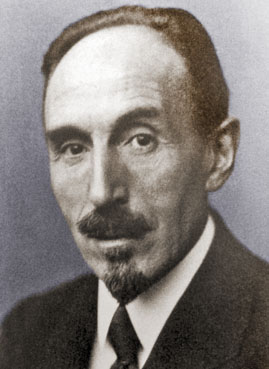
Herman H. ter Meer
Nominee: Herman H. ter Meer
Date of birth: December 16, 1871
Date of death: March 9, 1934
Place of birth: Leiden, Netherlands
Burial place: Südfriedhof Cemetery, Cologne, Germany
Herman H. ter Meer, Dutch taxidermist, was born December 16, 1871 in Leiden, Netherlands. He died March 9, 1934 in Leipzig, Germany and is buried in the Sudfriedhof cemetery. He is often referred to as the “European Akeley” by European taxidermists because, even though Carl E. Akeley was some years older, Herman developed his own technique for making manikins and was a pioneer of modern dermoplasty.
By using a mixture of plaster, glue, and turf, he was able to make a manikin which could be sculpted as it slowly hardened. For bases, he used wood and wireframes which he covered with a layer of plaster-rag, much like the burlap and plaster strips used in museums in the United States at that time. Christoph Meier, who was a young trainee in the late 1970’s said there were quite a number of “old taxidermy-cracs” in Europe who said that ter Meer’s technique was better than Akeley’s. This was mainly because their opinions were such that “you must do the hard work of a sculptor with material which is stable”.
Year after year, the ter Meer technique was used less and less for one reason or another, nevertheless, Herman was there in Europe. He always claimed that a taxidermist is an artist and not the same as “a small bird and mammal stuffer”. On February 1, 1895, Herman was employed at the Reich Museum of Natural History in Leiden as a taxidermist, where at that time, his father, Hermanus Hendrikus was the animal preparator. After his father retired in 1900, Herman continued to develop preparation methods, which included teaching important field care of the specimens. Not being happy with his working conditions, in 1907 he accepted an offer to work at the Zoological Institute of the University of Leipzig.
Ter Meer found joy working on new projects which included deep sea animals collected from the Valdivia Expedition in 1899. He always emphasized the importance of life-like realism in his work achieved from anatomical accuracy, and improved techniques which expressed the artful spirit of the specimen. As a result of these personal feelings, in 1931 he founded the special association called DEUKEMUS, with sculpting, artist taxidermists as members. The Association of German Taxidermists (VDP) continues today as a result of Herman H. ter Meer’s professional organization of museum dermoplastikers.

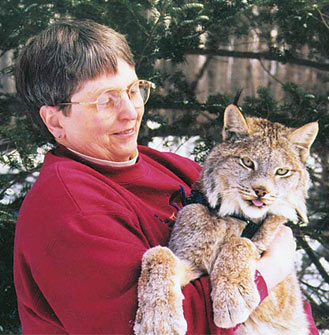
Jan Van Hoesen
Nominee: Jan Van Hoesen
Date of birth: May 5, 1942
Date of death: December 1, 2017
Place of birth: Mt. Pleasant, Michigan
Jan Van Hoesen lived in northeastern lower Michigan with a large menagerie of wild animals for live study. She held a teaching degree from Michigan State University, and served on the Board of Directors of the Michigan Taxidermist Association, the International Guild of Taxidermy, the National Taxidermists Association and the United Taxidermist Association. Jan established her world-class credentials in the early 1990’s when she took top honors at major taxidermy competitions with her outstanding mammal work, including winning the 1992 World Champion title for mammal taxidermy. She was also a respected taxidermy judge at all levels of competition, including the World Championships.
Jan Van Hoesen burst onto the scene with multiple wins at all levels of competition, winning the top awards at state, regional, national, international and World shows. She not only impressed the judges, but won numerous People’s Choice awards as well. It was always a treat for attendees anticipating what Jan would bring to a competition. Each of her small mammal entries showed a exciting new take on the species. The poses she chose had never been seen before in any taxidermy works. They all seem to capture subtle moments in animal behavior that portrayed the elusive “essence of the species” that all taxidermists strive for, but few achieve.
Jan had a secret weapon in understanding the finer points of anatomy and attitude. She lived with dozens of live animals at her home. She had bobcats and lynxes as pets in her house, and also raised raccoons, foxes and coyotes. This intimate knowledge of animal behavior gave her the inspiration to create works which always portrayed an accurate representation of nature.
Her backyard was a maze of cages, pens and hutches. She loved all the residents of her wildlife menagerie and took great care of them. As live reference is always best, she studied their behavior for hours at a time. The photographs she made of her mammals became some of the best-selling reference photo sets which are still carried to this day by major taxidermy supply companies.
When Jan was an active taxidermist, she specialized only in custom small mammal taxidermy. She did not produce assembly-line work. Each pose was carefully and artistically chosen to match the specimen. Instead of purchasing commercial mannikins off-the-shelf, Jan would meticulously cast, mold, sculpt, and create a new custom mannikin for each piece. The result was always a one-of-a-kind work of art. Through Jan’s unique knowledge of animal behavior and her artistic talent, she created beautiful works of taxidermy art which portray the very essence of the animal with honesty and dignity.
Jan was active in the politics of taxidermy, using her skills to advance the art and organizations for the betterment of the profession. She served on many boards, including the Michigan Taxidermist Association, the International Guild of Taxidermy, and the National Taxidermists Association. She was a Lifetime Charter Member of the United Taxidermist Association and served on its very first Board of Directors.
For many years, Jan sculpted mannikins for several major supply companies, and developed a line of realistic earliners as well as reference photo sets. She valliently battled the blood disease Mylodysplastic Syndrome for the final years of her life. She continued to occasionally judge competitions up until her death in 2017.
